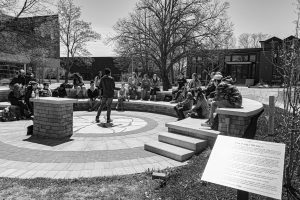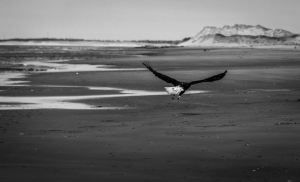Section 3 : Western Door ~ Relational Knowing, Honouring, and Accountability ~ Calls to Action ~ Change
Reflection
A few words to begin
To begin with, this reflection mirrors the type of reflection in which I have students engage. Reflection is an opportunity to answer the question, what I have learned; but, more importantly, how does this make me feel, why are these teachings important, and how I will go forward as I sit in the present and reflect back in time on the journey.
In this shorter section with only one chapter, in the direction of the West, I will be reflecting upon the essence of relational knowing and honouring, calls to action as relational accountability, and change in the context of teaching, delivering this course, and working to see the integration and growth of the IKERAS Faculty within the academy.
Relational knowing and honouring
As if it were meant to be, three photographs presented themselves to me. They nicely coincide with this highly spiritual journey within the academy. The first, in Figure 54, I label, relational knowing and honouring within the academy.
Figure 54: Relational knowing and honouring within the academy

I was asked if I would be interested in teaching a Sociology course titled, Civility and Society for the Department of Sociology and Anthropology during the first Summer Semester in 2019. I thought it was a perfect follow-up course to, Self and Society, which I taught, a couple of years earlier in 2017. Since joining UPEI in 2002, I was already teaching a first year offering, Introduction to Sociology, for well over 17 years, and all three were excellent learning opportunities. Being in the classroom to deliver and explore content whether face-to-face, on-line or in a hybrid format, researching and learning new subject matter, and engaging students with the teachings, all part of being a teacher, are highly rewarding aspects, and in every respect represent relational knowing and honouring.
Relational knowing is first and foremost knowing self. Knowing one’s gifts, one’s passion or fire, and one’s nature and vulnerabilities is a relational journey in and of itself. Knowing relational ways of engaging with community and society adds another layer of complexity. The pathways of knowing, learning, and engaging are varied, diverse, and, quite frankly, endless. Each day varies considerably when you think of it. Days may appear similar; but, each relational encounter presents a new pathway especially when encounter strangers, new students, professors, staff, or colleagues.
Let us consider what Indigenous Richard Wagamese said,
“We approach our lives on different trajectories, each of us spinning in our own separate, shining orbits. What gives this life its resonance is when those trajectories cross and we become engaged with each other, for as long or as fleetingly as we do. There’s a shared energy then, and it can feel as though the whole universe is in the process of coming together. I live for those times. No one is truly ever “just passing through.” Every encounter has within it the power of enchantment, if we’re willing to look for it” (Wagamese, 2016, p. 38).
As Wagamese suggests, life, trajectories, and enchanted pathways of relationality, seemingly emerge if we are open to it. Pathways within this relational journey reveal themselves in due course. Yet, we must be aware, and at times knowing what specific path to take is somewhat of ‘trick’. The key is to be know your nature and use sound judgement. Sometimes on the latter, if we make a ‘snap’ or ‘unwise’ decision, we find ourselves on another pathway. But, that to is an opportunity.
Since teaching is been part of my DNA as my father was an instructor and teacher, I’ve always felt it a natural fit, although at times, especially when trying something new in the classroom, it can be a bit intense internally. So this picture is a reminder that I’ve always honoured being with students, teaching, risking so I may learn, and being fully open to knowing as much as I can about relationality. My trajectory of beginning to understand Indigenous ways of knowing, being, and doing only came about mid-life, and in a most serendipitous way. It has allowed me to teach, write this Indigenous teachings textbook, and honour what I believe to be a most spiritual path.
In the image, I was facilitating a session with my Civility and Society class. I did not know at the time that two years later, in 2021, a special gathering would occur in the very spot I was standing. It was a gathering to mark the National Day for Truth and Reconciliation. That day, and what occurred opened the door for the creation of the new Faculty of Indigenous Knowledge, Education, Research, and Applied Studies. You can read about that in the Introduction of this textbook.
This place is sacred to me, and I honour it always. Not too long ago, I told the President of the university that the location was the center of the campus. In my mind, this very special place represented the heart of our institution, and should always be honoured. It’s a place of compassion, openness, reconciliation, and learning, I frequently bring my Indigenous classes there to open our hearts to other ways of knowing, being and doing, providing the weather cooperates. It often does.
Calls to action as relational accountability
I present in Figure 55 below, on the work I have undertaken at the University of Prince Edward Island including the launching a new Faculty, developing the mandated IKE 1040 course, engaging with students in its teachings, and the creation of this textbook and beyond. In essence, these have been my calls to action.
Figure 55: Tipi poles being erected for Maw’omi, Abegweit First Nation, Prince Edward Island (2017)

The image above shows a tipi (teepee), a Western plains structure, which has only the frame and not the outer covering nor a sacred fire inside. The tipi was erected for a Mawi’omi (PowWow) in Abegweit First Nation, and I was immediately drawn to it for its message. The photograph was taken in June of 2016. Sun shining bright, young person running around it, the long shadow of another tipi on the ground, and the fact that I, a Manitoba Cree, had taken this picture of a western shelter on L’nu territory. I suppose it was a premonition or sign. In the spring of 2022, I made arrangements for a tipi to be erected at UPEI after the ground and structure was blessed by Elder Thirly Levi. Each of those poles represents a teaching, and upon reflection, I’m like the young person running around to experience everything that was unfolding including the creation of the new Faculty.
My response to the Truth and Reconciliation Commission’s calls to action started with the Commission’s release of its Final Report in December 2015 in several roles. I won’t get into all the details; but, I am sure you know that I take this pathway seriously. I honour it and what it means for our peoples, Indigenous and non-Indigenous relations, and future generations. I try often to inject the seven scared teachings into this work. Since it is heavy lifting, and has been since 2015 and even before being the sole ‘indian’ teacher in the academy, I must be very careful not to cause my ‘Medicine Wheel’ to become imbalanced. Several times it did result in a total imbalance. Imbalance requires always honouring the teachings so one can heal, restore health, and begin the good path to wellness. I am committed to the teaching and learning calls to action for as long as the Creator sees me on this pathway. I am humbled to bring Indigenous teachings to my students in the best way I know how.
In short, I believe I am also applying the concept of relational accountability. As I indicated in the Preface, I am humbled by the work of countless selfless higher education warriors who honour family, community, their Elders and teachers through the teachings now being passed on to others. It is this ‘relational honouring’ that embodies the desired outcome of Indigenization, reconciliation and decolonization within higher education. A place where Nation to Nation, people to people relations transcend difference conceptually and in practice. I have been learning, and am a ‘kiskinwahamâkan‘ or student of the teachings and life.
Change
As I consider this journey, I honour all relations, particularly the kitpu (Mi’kmaq for eagle) or mikisiw (Cree). I have learned so much about ‘change’ through this wonderful relation that flies highest to the Creator. The eagle lives among us, and is connected to all other relations as evidenced in Figure 56.
Figure 56: Kitpu (mikisiw) with its relations on Epekwitk

I know we must always seek ways of knowing, being, and doing that honour all our relations. I see change as the only pathway for all relations to survive. We are not static, and we are not time travellers. We cannot go back and ‘fix’ what has occurred including the harms perpetrated on our relations no matter how much we would like. We simply need to change that what needs to be changed so as not to repeat past mistakes; and, move forward while honouring the past through the values that our ancestors continue to provide us. While this concept will need further understanding and reflection, I do know that for Indigenous peoples, and what we have learned through this course, is that change is absolutely required.
References
Wagamese, R. (2016). Embers: One Ojibway’s Meditations. D & M Publishers.
